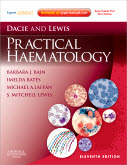1.Collection and handling of blood
2. Reference ranges and normal values
3. Basic haematological techniques
4. Preparation and staining methods forblood and bone marrow films
5. Blood cell morphology in health and disease
6. Supplementary techniques including blood parasite diagnosis
7. Bone marrow biopsy
8. Molecular and cytogenetic analysis
9. Iron deficiency anaemia and iron overload
10. Investigation of megaloblastic anaemia:cobalamin, folate and metabolite status
11. Laboratory methods used in the investigation of the haemolytic anaemias
12. Investigation of the hereditary haemolytic anaemias: membrane and enzyme abnormalities
13. Acquired haemolytic anaemias
14. Investigation of abnormal haemoglobins and thalassaemia
15. Erythrocyte and leucocyte cytochemistry
16. Immunophenotyping
17. Diagnostic radioisotopes in haematology
18. Investigation of haemostasis
19. Investigation of a thrombotic tendency
20. Laboratory control of anticoagulant,thrombolytic and antiplatelet therapy
21. Blood cell antigens and antibodies: erythrocytes, platelets and granulocytes
22. Laboratory aspects of blood transfusion
23. Approach to the diagnosis and classification of blood diseases
24. Laboratory organization and management
25. Quality assurance
26. Haematology in under-resourced laboratories
27. Appendix


